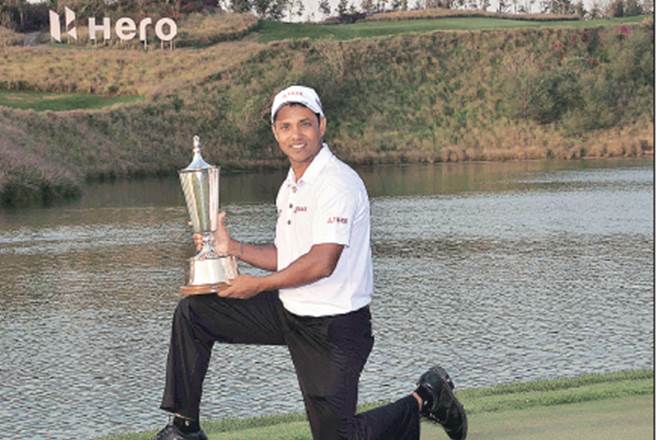I’m not privy to SSP Chawrasia’s investment portfolio, but if I had to speculate, then I’m reasonably certain that it would be one focused on long-term returns rather than short-term gains—not stymied by fearful conservatism, but not driven by impulsive optimism either. At the DLF Golf & Country Club’s Gary Player layout, scene of the 2017 Hero Indian Open, Chawrasia’s approach began with unstinted conservatism: the golf course was a question mark and he wasn’t going to invest in something he had little understanding of. Practice rounds revealed a world-class championship layout with a multitude of weapons in its arsenal to thwart would-be champions and Chawrasia, unlike most professional golfers, had no qualms about admitting his fear.
“I was a little scared, this is a new course, a tricky course, but I’m happy with a level par to start with,” he said after his first round. In retrospect, it’s clear that the Kolkatan was scoping out the course that day: identifying booby traps and the safest lines on the greens. In the process, he came good on his strategy to shut out big numbers and make par on every hole. That’s much more difficult than it seems; hitting a hero shot, in fact, is harder than not hitting one all day. Right from the onset, it was clear that Chawrasia’s investment was driven purely by objectives rather than emotion.
That strategy came good the very next day: in his second round, Chawrasia played exactly the same approaches on most holes as he did on the first day, but this time around the putts dropped: birdies from 25 feet and 20 feet on the fifth and eighth holes, respectively, and a mammoth 45-feet on the 14th hole. The ensuing five-under 67 meant the Kolkatan went into the weekend at the top of the leaderboard.
You May Also Want To Watch:
[jwplayer VY0weP2J-DE6UeepY]
By the time Chawrasia signed off for a stellar four-under 68 on the third day, it was apparent that he had got the measure of the Gary Player layout. But instead of easing up, he became even more committed to his strategy of paying the course its due with no flamboyance and utmost prudence.
Scoreboards are inert: they display numbers with no indication of how those numbers came on the board. Chawrasia’s final round one-under 71 would seem, to someone who wasn’t at the venue, or hasn’t seen the coverage, as straightforward consolidation play to secure the title. That wasn’t the case: seemingly cruising along to victory, Chawrasia made tactical errors and dropped two shots in quick succession on the sixth and seventh holes.
Just when it seemed like the chasing pack might have a chance, he coolly undid the damage with a clutch of birdies on the eighth and ninth holes, and sealed his win with yet another birdie on the 13th hole before cantering in with a string of pars.
In four rounds, Chawrasia dropped only six bogeys, the least by any player in the field. His seven-shot victory was also the largest margin of victory on the Asian Tour this year. He needed only 26.7 putts per round, the lowest in the field.
Chawrasia’s victory is even more commendable given the added pressure of being defending champion. He’s only the second Indian to have won the Open in consecutive years since Jyoti Randhawa pulled off the feat in 2006 and 2007. With all due credit to Randhawa’s achievement, I would argue that Chawrasia’s victory is even more laudable simply because he won on a golf course that offered no home advantage. On the contrary, the layout, incorporating multiple water bodies, large glassy greens, and undulating fairways, set upon by swirling winds, must have felt more like home to the Europeans in the fray. The fact that Anirban Lahiri (who finished tied fifth) was the only other Indian in the top-20 testifies to the layout’s distinctly international character—only 13 Indian golfers made the cut, by far the lowest in recent history.
Chawrasia now has finished first or second at the Indian Open an astonishing six times. He’s the first Indian ever to defend a European Tour title and has climbed from 194th place to 18th position in the European Tour’s Race to Dubai and from 60th to second place in the Asian Tour Order of Merit. The Kolkata man is now also ranked 161st in the world, up 80 spots from his pre-tournament ranking of 258.
With a tally of six Asian Tour victories, Chawrasia has also equalled Jeev Milkha Singh’s record of four wins on the European Tour. On paper, he’s still to win a European Tour event in Europe, but to dismiss his triumph at the 2017 Hero Open as a home win would be plain folly. The only thing Indian about this year’s event is the champion.
A golfer, Meraj Shah also writes about the game

